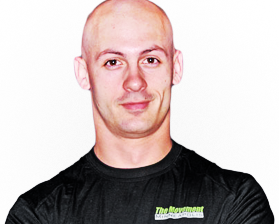
These one-hand power lifts are absolutely fantastic for building total body coordination, power, balance, and strength. To get into specifically why is beyond the scope of this article, but I’d also argue that they’re in many ways safer than their bilateral counterparts. And you don’t have to use as much absolute load to get the same training effect. You know why they were dropped from competition? Because contests took too long with competitors having to do both hands. Once they were dropped from contests, they naturally fell out popularity with everyone else. Plus, there’s an argument to be made that in the 60’s when bodybuilding really started to become popular these exercises that required tremendous strength but not necessarily muscular size fell out of favor.


Leave a Reply
You must be logged in to post a comment.